Marine aquariums: selection of fish and equipment, launch rules
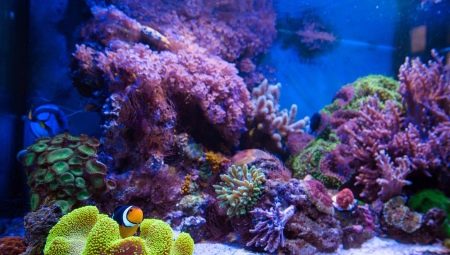
The seabed with exotic fish and coral reefs is a beautiful creation of nature! This is a whole life with its own rules and laws. Anemones, clown fish, starfish - everything "breathes", pulsates and amazes with a variety of colors. Fascinated by this beauty, many aquarists create a marine aquarium instead of a freshwater aquarium and successfully maintain it at home.
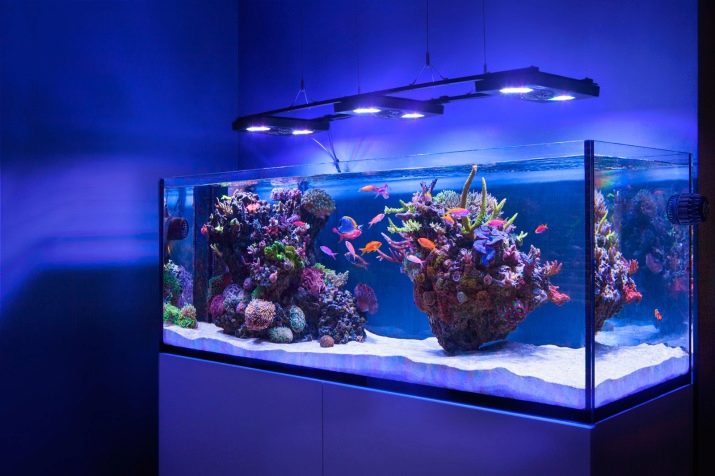
What it is?
The marine aquarium is a complex ecosystem that mimics the sea and its inhabitants. Such a reservoir is inhabited by exotic species of fish, and stunningly beautiful coral reefs are created at its bottom. Other creatures are also added to the aquarium: hermit crabs, shrimps, starfish and hedgehogs. The color of many marine inhabitants is very bright, sometimes fluorescent, due to this, such an aquarium looks gorgeous in the interior.
But creating such beauty is not so easy - unlike a freshwater aquarium, a marine one is more difficult to maintain and care for.
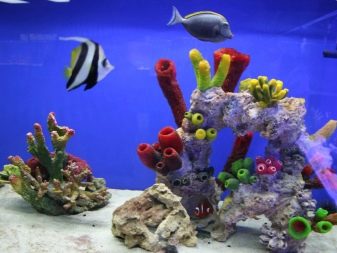
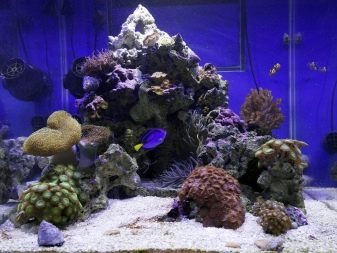
To start it, you need to properly prepare the water, buy "living stones" and connect a lot of equipment. Marine life is very sensitive to environmental changes, so you will have to constantly monitor water parameters such as temperature, hardness, alkalinity, acidity and calcium content.
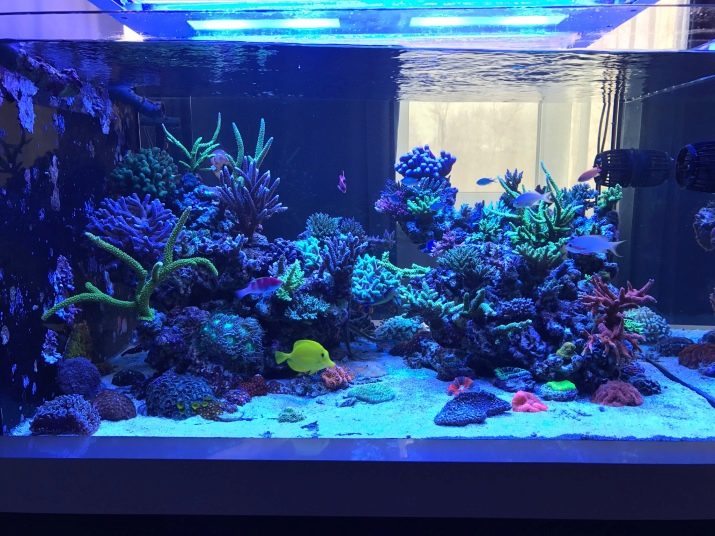
Advantages and disadvantages
Pros of a marine aquarium obvious:
- the bewitching beauty of the underwater world, such an aquarium will transform any interior;
- you can contain unusual sea creatures, it is very interesting and informative;
- breeding exotic fish is a profitable business, fry of some species are not cheap (about 7-10 thousand rubles per fish).
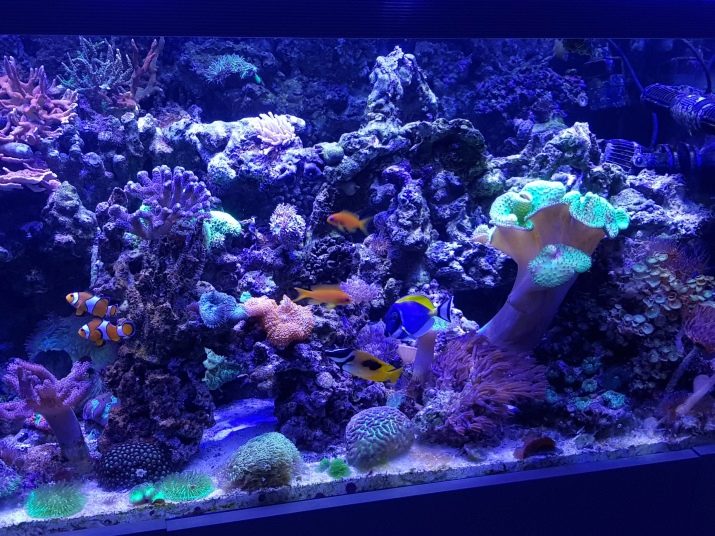
The marine aquarium is, of course, very attractive, but it is worth knowing about the disadvantages of its maintenance:
- full technical equipment is required, even a separate rack may be required for the equipment;
- it is very difficult to prepare water that meets all the parameters to start the aquarium and to top up the medium;
- a marine aquarium is a financially expensive pleasure, the equipment and the sea inhabitants themselves are expensive.
Despite these difficulties, many still decide to create and equip an exotic reservoir, because you really want to have a piece of the sea at home.
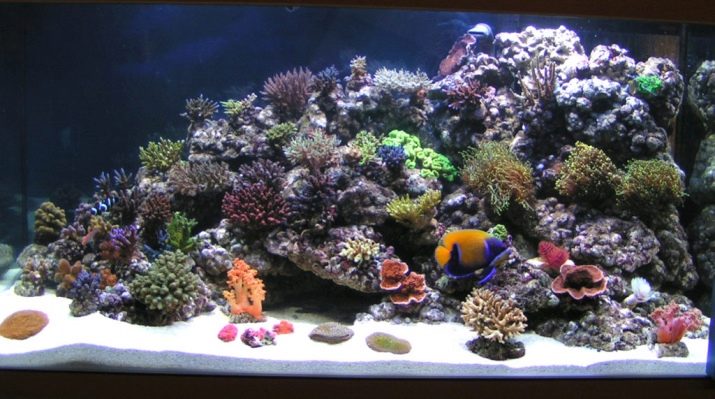
Views
Marine aquariums are different, 3 main types can be distinguished:
- with fish;
- with fish and with "living stones";
- reef.
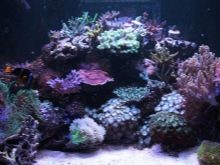
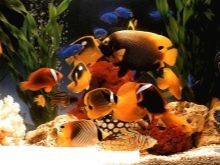
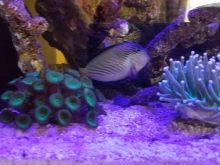
The first type involves keeping only fish in an artificial reservoir. This is the most economical option for a marine aquarium. But caring for it is not so easy, and it will be difficult for a beginner. Firstly, there may be problems with starting the aquarium, since without "living stones" it is much longer and more difficult to form an ecosystem; secondly, you will have to more carefully monitor the water parameters and install powerful filters.
But sea fish are easier to care for than corals. Waterfowl have stronger immunity and resistance to adverse environmental conditions.
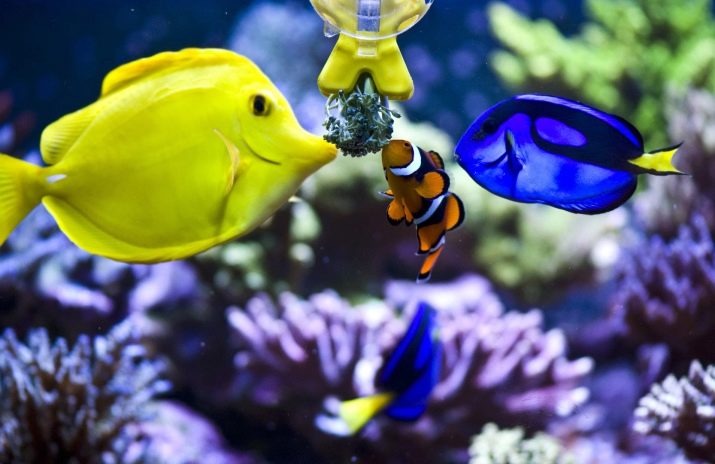
In one aquarium, you can keep several peaceful species or be limited to predators. It is also recommended to add other sea creatures: snails and hermit crabs. They will help control the growth of harmful algae.
The second type is an aquarium with fish and "live stones". This is the preferred option. Sea stones are called "alive", inside of which a variety of microorganisms live; when the necessary conditions are created, they begin to grow and develop. Due to this, the ecosystem necessary for marine life is quickly formed in a marine aquarium. Also, "living stone" provides natural filtration in an artificial reservoir and removes nitrates from water. It will be easier to take care of such an aquarium, but you should know that "live stones" are not cheap - about 600-800 rubles per 1 kg.

In a container with a volume of 100 liters, you will need to place at least 10 kg of such stones.
The third type of aquarium is reef, the most difficult to maintain. Ideal conditions must be created for the growth and development of different coral species. This includes high-quality lighting, and the purchase of various additives, and daily monitoring of water indicators. Despite this, many are attracted by this particular version of the aquarium. Sea reefs are literally dazzling with a riot of colors and a variety of forms. Soft corals look interesting, they sway beautifully in time with the current, and hard corals have a wide range of colors. But you should be aware that not all invertebrate organisms are friendly with each other, so you should carefully select neighbors for them.
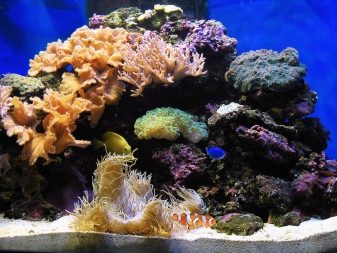
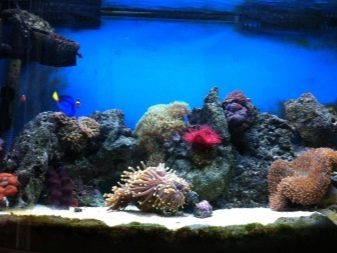
Dimensions (edit)
The size of a marine aquarium varies. The larger the tank, the longer the purity remains and the more stable the parameters of the environment in the reservoir. But you should not choose too large a tank for the first time, since aquariums with a volume of 500-1000 liters require powerful and expensive equipment. Therefore, for beginner aquarists, it is recommended to purchase a container with a volume of about 100-200 liters - this is optimal for the first experiment.
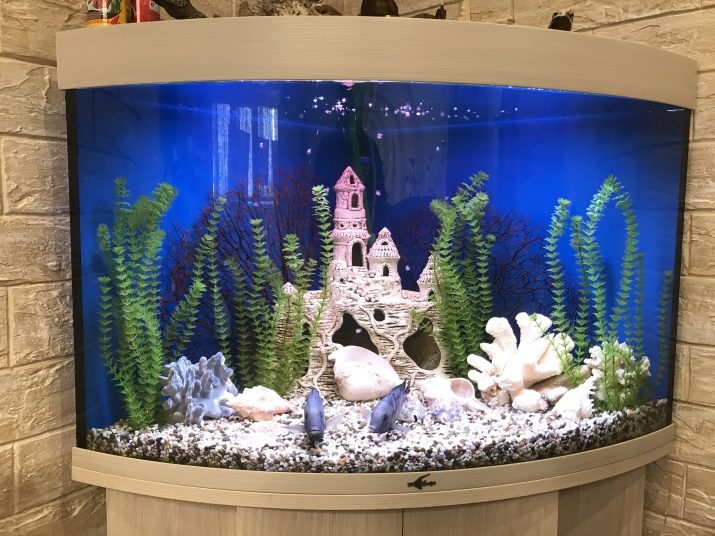
Some “sea” lovers choose nano aquariums with a volume of 30–70 liters. In such containers, sea gardens are most often created, growing corals of various types.
Some fish can also be populated into a small aquarium; preference is given to peaceful and small species. However, it is worth considering: it will be more difficult to establish a biological balance in it, it will require a lot of additional reagents and constant monitoring of all indicators.
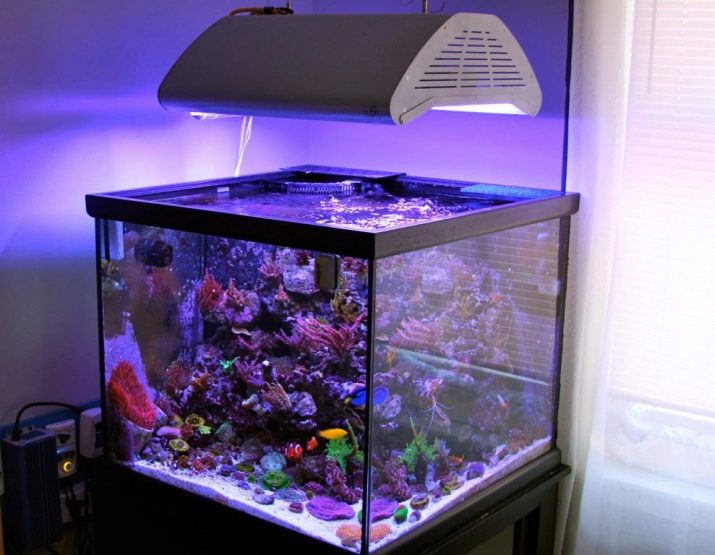
How to choose?
For the organization of a sea reservoir, a durable, reliable reservoir is chosen.If the tank leaks when the artificial sea is launched, all the work done will be wasted. Therefore, when choosing a tank, you should pay attention to the following points:
- glass thickness (aquarium up to 30 l - 4 mm, from 50 to 120 l - 6 mm, from 200 to 300 l - 8 mm);
- no scratches and chips;
- smooth seams without defects.
It is not recommended to buy an aquarium off-hand, because it is not known how long it has been in operation, and each tank has its own service life.
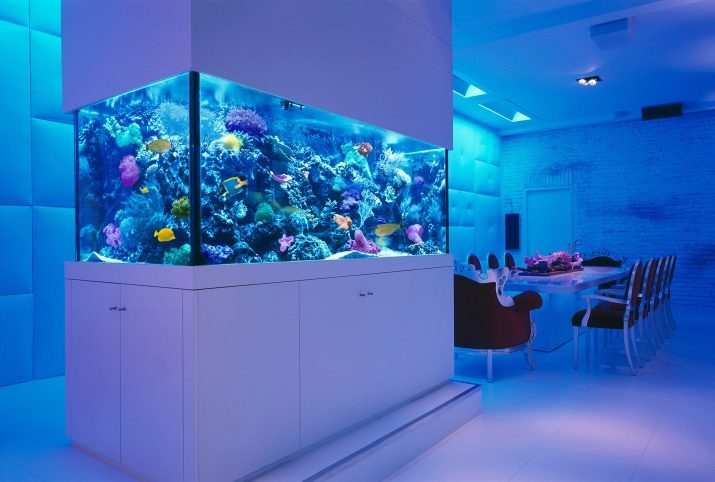
It is better to contact specialty stores or a trusted master. When you buy from them, you will receive a guarantee, and in case of problems, the defective product can be returned. In addition, a new aquarium will last longer.
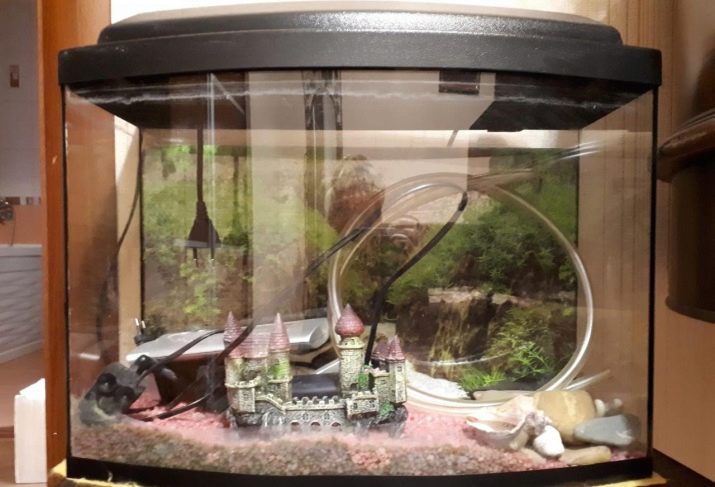
How to equip?
The marine aquarium is equipped with all the necessary equipment. It does not look very aesthetically pleasing in a seawater, moreover, it takes up a lot of space, so a sump is installed. This is a separate container that houses all the instruments that support the marine environment. For a sump, choose a secluded place next to the aquarium, for example, behind a pond or in a cabinet. The water from the aquarium enters this separate tank, passes through all treatment systems, and returns to the corals and fish.
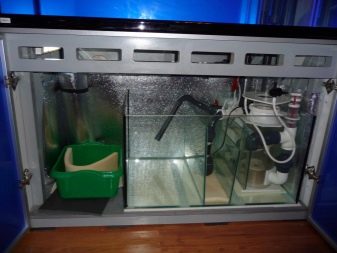
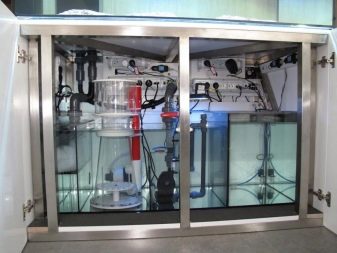
You can do without a sump, but experienced aquarists agree that it will be difficult to maintain the necessary environment on your own, especially for beginners.
In order for the marine life to feel comfortable, the aquarium is equipped with the following equipment:
- lamps;
- a flotator;
- fluidized bed filter;
- the pomp of the current;
- calcium reactor;
- heater and cooler.
Light in a marine aquarium is primarily necessary for corals, so if you are going to grow them, you will need quality lighting. We recommend purchasing high intensity metal halide, fluorescent or LED lamps.
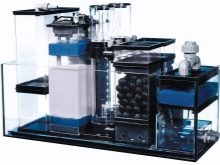

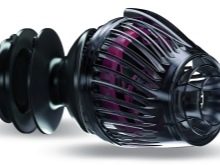
The kit should include an individual reflector, thanks to which the beam of light will be directed to the aquarium as much as possible.
With this kind of lighting, marine life will look even more spectacular. The luminaires are installed above the aquarium.
The skimmer will keep the sea world clean. Its other name is skimmer or penny. It removes dirt and harmful organic matter from the aquarium, which poisons marine life, causes disease and even death. It is better to choose the best pennik, you cannot save on it. It is fixed to the back of the tank or installed in a sump.
The fluidized bed filter clarifies and purifies the water. It is a flask into which various fillers are poured. Biogranules are recommended for marine aquariums, they promote the growth of beneficial aerobic bacteria that absorb nitrates and phosphates. The fluidized bed filter is installed in the sump next to the foam.
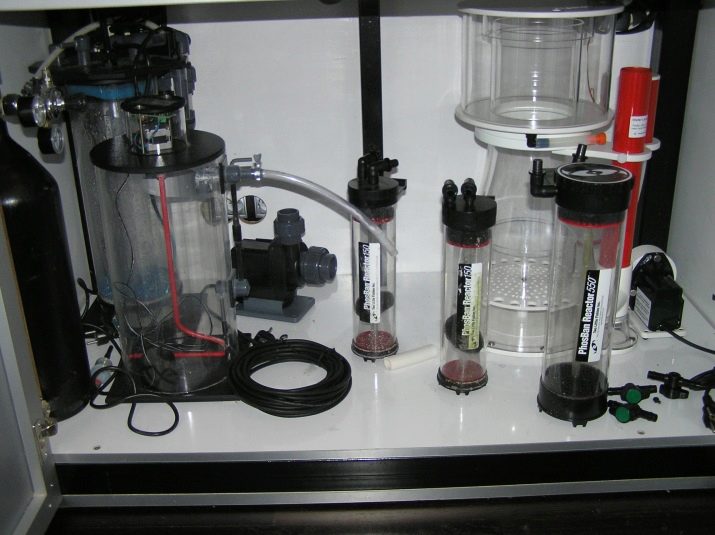
The flow pump in the aquarium creates the movement of water flows, and this is especially necessary for invertebrates. The current cleanses the corals, washes away their waste products and brings them food particles.
In addition, such corals as Xenias, Sarcophytons, Sinularia beautifully pulsate and sway under the influence of water currents. The aquarium looks more interesting, it “breathes” and “lives”.
The calcium reactor saturates the water with calcium and carbonate. It is not necessary to install it in the aquarium, since the necessary additives can be added to the water yourself. It is only necessary for stony corals, which require a lot of calcium to grow. But it is better to purchase a heater and a cooler. They will help maintain the temperature required for marine life and avoid sudden changes in it.
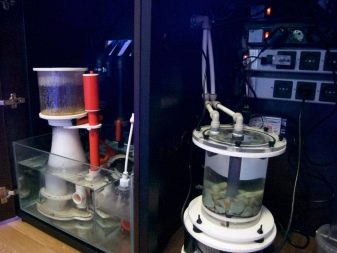
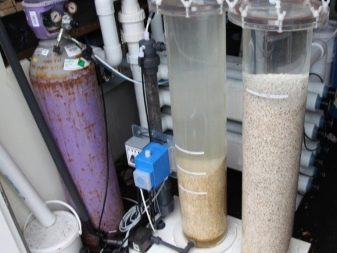
How many and what kind of inhabitants can you keep?
The population in the aquarium is selected very carefully - it is necessary that the marine inhabitants are not at enmity with each other, and the conditions of their keeping are approximately the same. The 7 most popular marine aquarium fish are described below.
- Clown fish - easy-to-maintain marine inhabitants.Peaceful, active and mobile, they like to live in a flock. The body color is bright orange with white stripes.
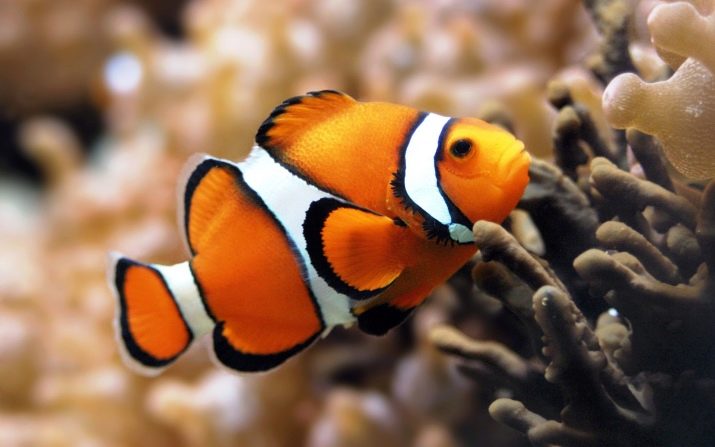
- Surgeon Is a herbivorous fish that will rid the aquarium of unwanted algae.
Surgeons are not aggressive and can live with other types of fish.
The fish is very beautiful: blue-blue abdomen with contrasting black stripes and a yellow tail.
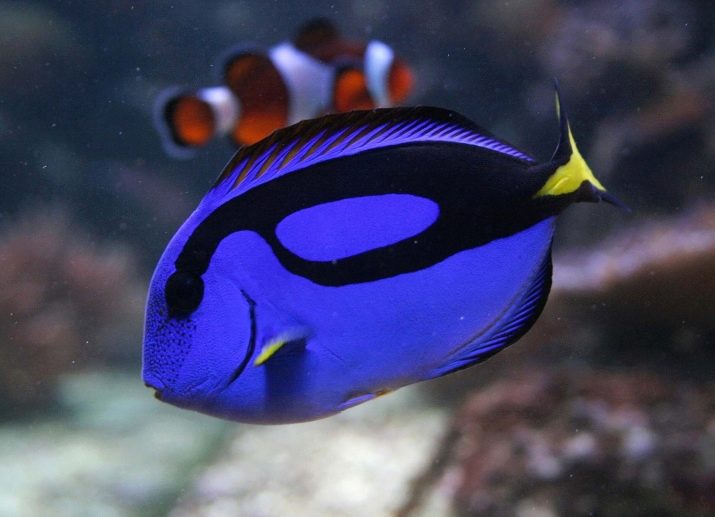
- Zebrasoma - peaceful marine fish with a bright yellow color. They like to eat algae, prefer to keep in flocks. They need bright lighting and a spacious aquarium.
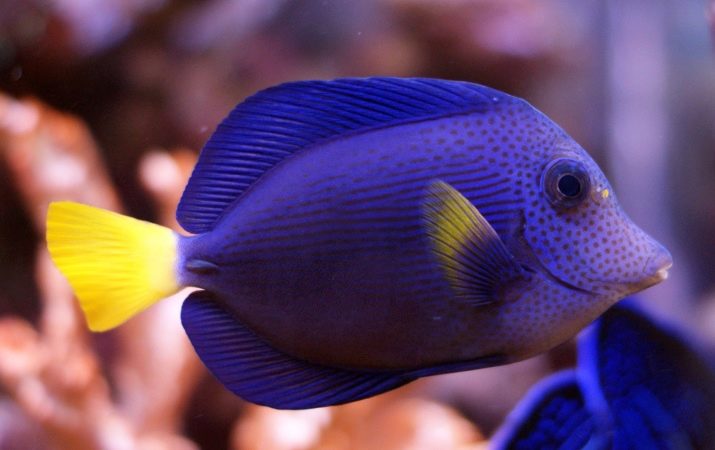
- Chrysiptera sapphire - a rather aggressive species of sea fish. The belly is colored sapphire blue and, in bright light, shines beautifully with lilac and green hues. In an aquarium with chrysipters, it is necessary to create many hiding places.

- Guban pajamas - the fish is territorial and aggressive towards its neighbors. Therefore, it can only be kept with strong fish or alone. Pajamas wrasse has chic colors, most often lilac-blue individuals with bright orange stripes, but there are many other color variations.
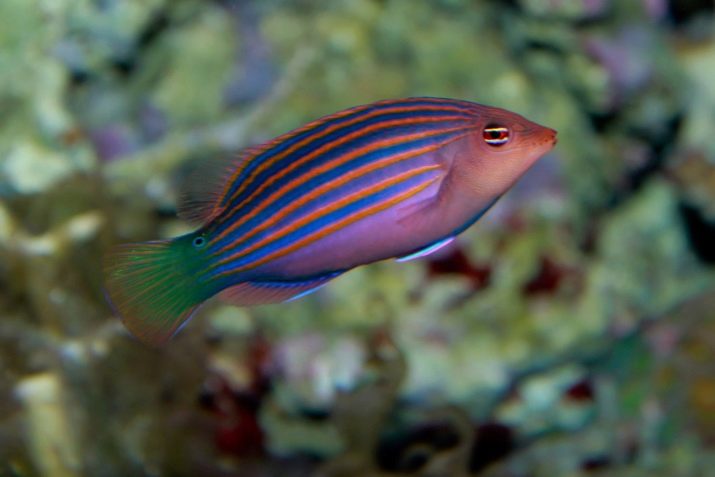
- Tulle apogee - an original fish with high radial fins.
Wide black stripes run across the silvery body, contrasting white spots stand out on the fins and tail.
Apogons are peaceful and interesting creatures. They get along well with each other and with other non-aggressive species.
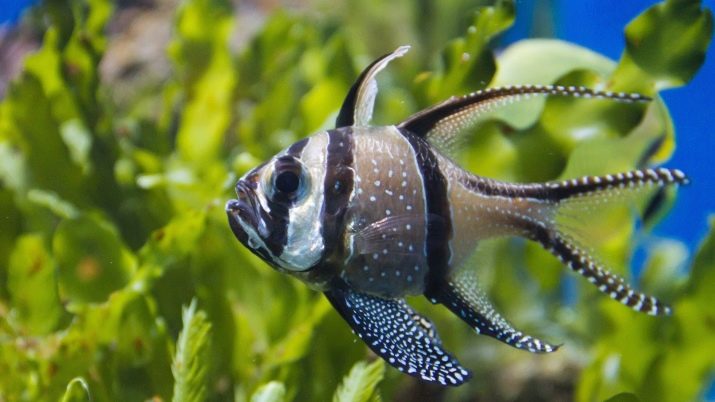
- Parrot - in general, peaceful creatures, but do not mind eating some shellfish and corals. They got their name for their external resemblance to birds - the mouth of the fish resembles a beak.
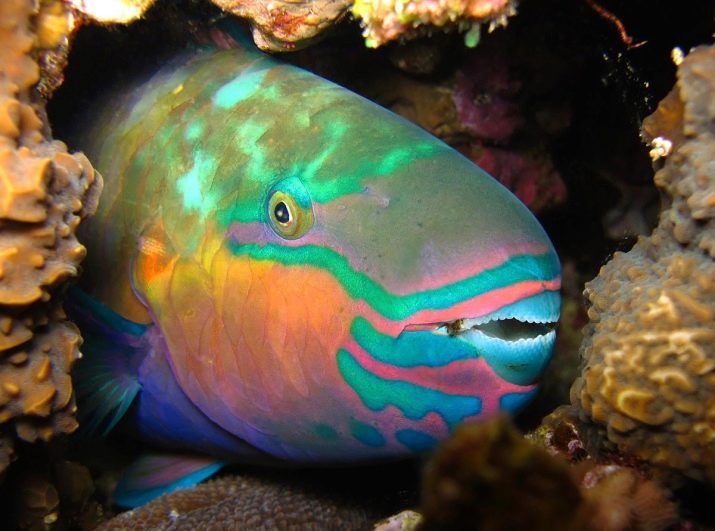
The marine aquarium is interesting in that you can keep not only fish, but also other equally interesting creatures in it:
- sea shrimp;
- hermit crabs;
- starfish;
- snails;
- crabs;
- sea urchins.
In a small reservoir with a volume of 50 liters or more, you can populate 2 clown fish and several sea shrimps.
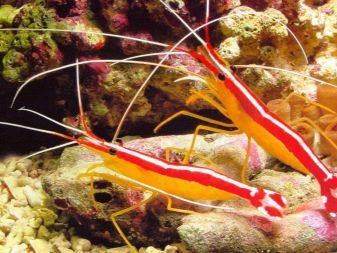
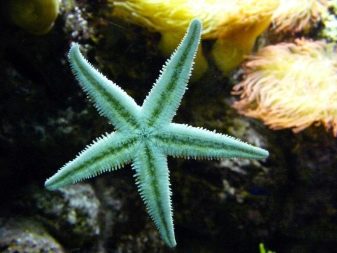
For a nano aquarium, there is another option: 2 tulle apogons, a few shrimps and an anemone crab.
One sapphire chrysiptera will need a 100-liter tank, and a male and two females will need an aquarium of at least 300 liters. For zebras and surgeons, you need a bigger aquarium - from 200 liters per individual, and for parrot fish you need a capacity of at least 500 liters.
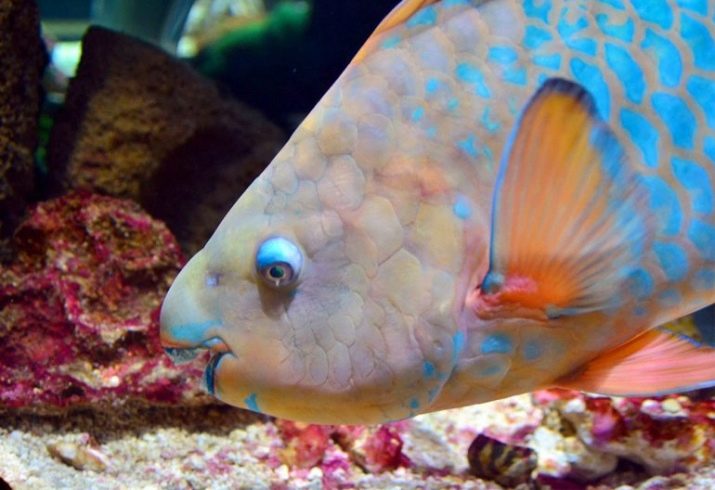
How to register?
The design of an exotic aquarium can be anything, but preference is given to one that emphasizes the natural marine environment. The landscape of the seabed is recreated from "living stones", the ground is chosen white, and a blue or blue background is fixed on the back wall - it gives the effect of the sea depth. As underwater life evolves, new species of coral are added, thus adding variety to the reef's color palette. If the aquarium is started without "live rocks", then the seabed is recreated using artificial decorations.

How to prepare for launch?
Before starting the aquarium, it is prepared as follows:
- wash well without soap;
- set on a flat, stable surface;
- place all the technical equipment;
- add salt water;
- include filters;
- leave for a day;
- add sand and "living stones";
- include all equipment.
It should be noted that the water is salted using special mixtures, and not ordinary homemade salt. The addition of salts takes place in a separate container.
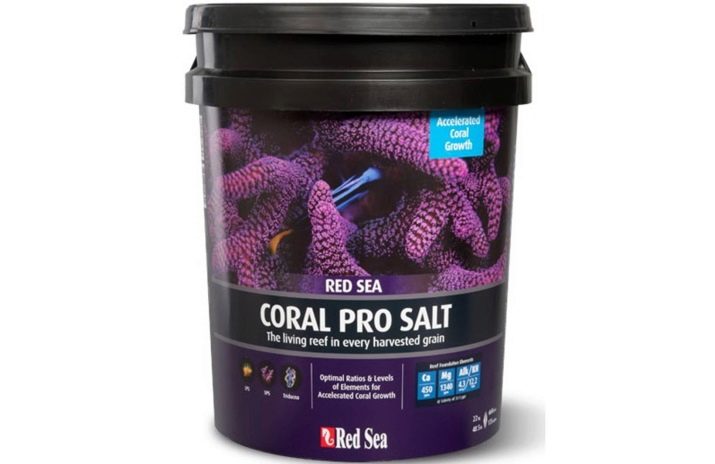
When the specific gravity reaches 1.024 on the hydrometer, water can be poured into the aquarium. Particular attention should be paid to the preparation of "live stones": all the dirt is knocked out of them and cleaned with a brush.
This can be done in a separate container. The stones are washed until the water is clear. The sand is also thoroughly washed.
Usually the required biological balance is established within 2-3 weekswhen it is reached, you can start the fish. Diatoms will often grow rapidly when starting up an aquarium. They cover the walls of the aquarium and the sand. Do not worry about this, it is considered the norm.When biological equilibrium is achieved, diatoms will begin to disappear. Many sea creatures love to feast on them, so green fouling will have no chance of survival.

How to contain?
After successfully launching the aquarium it is necessary to monitor the biological balance of the marine world:
- Change 25% of water once every 2-3 weeks;
- ensure the smooth operation of all technical equipment, the equipment must not be turned off even at night;
- check the water parameters several times a month.
In order to avoid the growth of unwanted algae, the balance between nitrate and phosphate must be constantly maintained. If any of the indicators drops to 0, then add sodium nitrate or potassium dihydrogen phosphate.
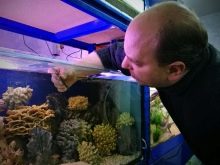
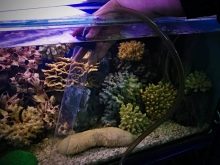
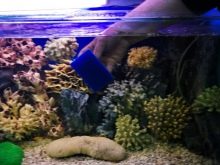
The dosage of phosphates and nitrates should be very careful, the drugs are applied drip. You also need to control such indicators of water as hardness, acidity and temperature.
The installed filters and beneficial microorganisms will keep the water clean at a high level. Sometimes you can clean the bottom yourself, do it very carefully using a siphon. Only the darkest areas are selected, if the soil is light, then it is not touched. After cleaning the sand, you can accidentally remove some beneficial microorganisms from the aquarium. They monitor the health of the fish and their behavior, feed according to the preferences of each species. If the marine life is doing well, then the aquarium itself looks bright and cheerful.
How to properly run a marine aquarium, see below.








